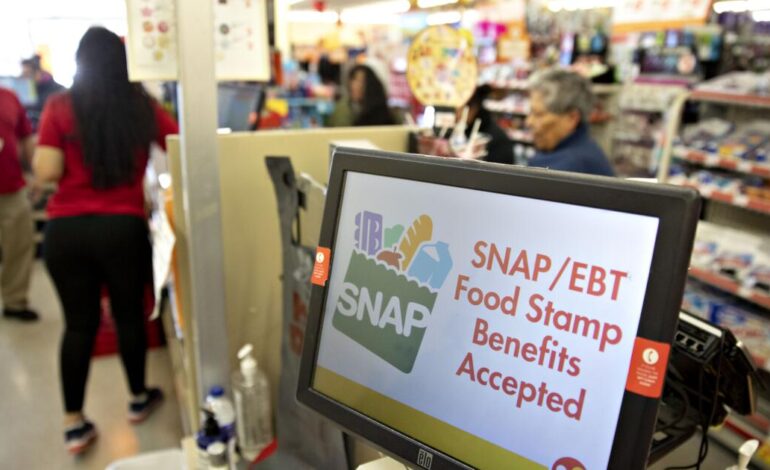SNAP Benefit Disruptions Heighten Food Insecurity Crisis Nationwide

The ongoing disruption of the Supplemental Nutrition Assistance Program (SNAP) is amplifying an already critical food insecurity crisis in the United States. Food pantries across the nation are bracing for an unprecedented surge in demand as benefits are set to run out amid a federal government shutdown. Volunteers are increasingly concerned about their ability to meet the needs of those relying on their support.
At the Silver Lake Community Church food pantry in California, coordinator Leah E. Gose, commented, “I hope this is going to be enough,” while preparing donated food for distribution. Over the past year, the pantry has seen a steady increase in the number of families it serves, now providing assistance to around 200 households weekly. This rise reflects broader economic challenges, including widespread layoffs and the impact of the federal shutdown on SNAP benefits.
The statistics are alarming. In 2023, around 1 in 7 people in the United States, including 1 in 5 children, faced food insecurity. The SNAP program, formerly known as food stamps, was crucial in addressing these issues, reaching approximately 1 in 8 Americans in 2024. Beneficiaries in California, utilizing the CalFresh program, received an average of about $189 monthly, while Los Angeles County issued over $300 million in SNAP benefits in June 2025 alone.
Despite its effectiveness, SNAP does not fully eliminate food insecurity. The benefits cover only about 80% of a family’s food needs, and many eligible individuals do not participate in the program. An estimated 45% of food pantry users are already utilizing SNAP, indicating a significant overlap between those dependent on food assistance and those relying on charitable organizations. In 2023, more than 60,000 food banks and pantries distributed over 4 billion pounds of food to more than 50 million people.
The current disruption to SNAP funding poses a serious threat to food access for millions. Local organizations like Silver Lake Community Church are already stretched thin, often operating at full capacity without adequate storage or volunteer support. Gose expressed concern that pantries could run out of food entirely, leaving many without essential supplies.
The economic implications of SNAP extend beyond individual households. The U.S. Department of Agriculture estimates that every dollar spent through SNAP generates more than $1.50 in economic activity. In California alone, over 30,000 retailers accept SNAP, contributing to local economies. Despite the benefits to communities, major retailers have not actively opposed the interruptions to SNAP funding, instead focusing on managing theft concerns amid rising food insecurity.
The Trump administration has faced criticism for its handling of SNAP funding during the government shutdown. Officials have been directed to ensure SNAP continues to be funded, yet reports indicate that only partial payments are being issued, exacerbating the crisis. A population struggling with hunger may lack the energy or resources to advocate for change, creating a cycle of dependency and neglect.
Calls for action are mounting, urging lawmakers to prioritize SNAP funding and remove it from political negotiations. Advocates emphasize that while the program is not a complete solution, it is a vital lifeline for many. The previous administration utilized legal authority to fund SNAP during past shutdowns, and similar measures could be adopted again to alleviate immediate needs.
As the crisis unfolds, local organizations are appealing for support. Monetary donations to food pantries and feeding programs are particularly valuable, allowing these groups to purchase necessary supplies and ensure efficient distribution. While food drives are well-intentioned, cash contributions enable organizations to address specific needs more effectively.
The challenges posed by the current disruption to SNAP highlight the fragility of food security in the U.S. While the program provides essential support, it is clear that comprehensive solutions are needed. As the nation grapples with these issues, it is imperative for individuals to engage with their representatives and advocate for sustainable funding and policies aimed at reducing food insecurity for all.






